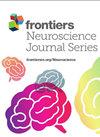对人工智能在中风中的应用进行文献计量和可视化分析
IF 3.2
3区 医学
Q2 NEUROSCIENCES
引用次数: 0
摘要
背景中风是导致全球死亡和残疾的一个主要原因,是一个重大的公共卫生问题。近年来,人工智能(AI)发展迅速。已有研究探索了人工智能在影像分析、辅助康复、治疗、临床决策、卒中预后和风险预测等方面的应用。然而,目前仍缺乏系统的文献计量学分析,以了解人工智能在脑卒中应用方面的研究现状、热点及未来可能的发展趋势。方法从科学网核心数据库中检索有关人工智能在脑卒中应用方面的文献,时间跨度为 2004-2024 年。本研究只收录用英文发表的文章或综述。随后,我们采用人工筛选的方法剔除了与主题无关的文献。使用 CiteSpace、VOSviewer 和 Charticulator 生成了可视化图表,以便对收录的文献进行全面深入的分析。发表论文最多的作者、国家和机构分别是杜克洛(Dukelow, Sean P.)、中国和卡尔加里大学,他们为该领域的发展做出了重要贡献。值得注意的是,作者和机构之间形成了稳定的合作网络。通过对关键词和参考文献的聚类和引文猝发分析,确定了当前的研究热点,包括机器学习、深度学习、人工智能在脑卒中康复和成像早期诊断中的应用。此外,新出现的研究趋势主要集中在机器学习以及中风预后和风险预测方面。结论本研究对有关中风人工智能的文献进行了全面深入的分析,有助于快速了解该领域的发展现状、合作网络和研究重点。此外,我们的分析还可为未来的研究工作提供一定的参考和指导。本文章由计算机程序翻译,如有差异,请以英文原文为准。
Bibliometric and visualized analysis of the application of artificial intelligence in stroke
BackgroundStroke stands as a prominent cause of mortality and disability worldwide, posing a major public health concern. Recent years have witnessed rapid advancements in artificial intelligence (AI). Studies have explored the utilization of AI in imaging analysis, assistive rehabilitation, treatment, clinical decision-making, and outcome and risk prediction concerning stroke. However, there is still a lack of systematic bibliometric analysis to discern the current research status, hotspots, and possible future development trends of AI applications in stroke.MethodsThe publications on the application of AI in stroke were retrieved from the Web of Science Core Collection, spanning 2004–2024. Only articles or reviews published in English were included in this study. Subsequently, a manual screening process was employed to eliminate literature not pertinent to the topic. Visualization diagrams for comprehensive and in-depth analysis of the included literature were generated using CiteSpace, VOSviewer, and Charticulator.ResultsThis bibliometric analysis included a total of 2,447 papers, and the annual publication volume shows a notable upward trajectory. The most prolific authors, countries, and institutions are Dukelow, Sean P., China, and the University of Calgary, respectively, making significant contributions to the advancement of this field. Notably, stable collaborative networks among authors and institutions have formed. Through clustering and citation burst analysis of keywords and references, the current research hotspots have been identified, including machine learning, deep learning, and AI applications in stroke rehabilitation and imaging for early diagnosis. Moreover, emerging research trends focus on machine learning as well as stroke outcomes and risk prediction.ConclusionThis study provides a comprehensive and in-depth analysis of the literature regarding AI in stroke, facilitating a rapid comprehension of the development status, cooperative networks, and research priorities within the field. Furthermore, our analysis may provide a certain reference and guidance for future research endeavors.
求助全文
通过发布文献求助,成功后即可免费获取论文全文。
去求助
来源期刊

Frontiers in Neuroscience
NEUROSCIENCES-
CiteScore
6.20
自引率
4.70%
发文量
2070
审稿时长
14 weeks
期刊介绍:
Neural Technology is devoted to the convergence between neurobiology and quantum-, nano- and micro-sciences. In our vision, this interdisciplinary approach should go beyond the technological development of sophisticated methods and should contribute in generating a genuine change in our discipline.
 求助内容:
求助内容: 应助结果提醒方式:
应助结果提醒方式:


